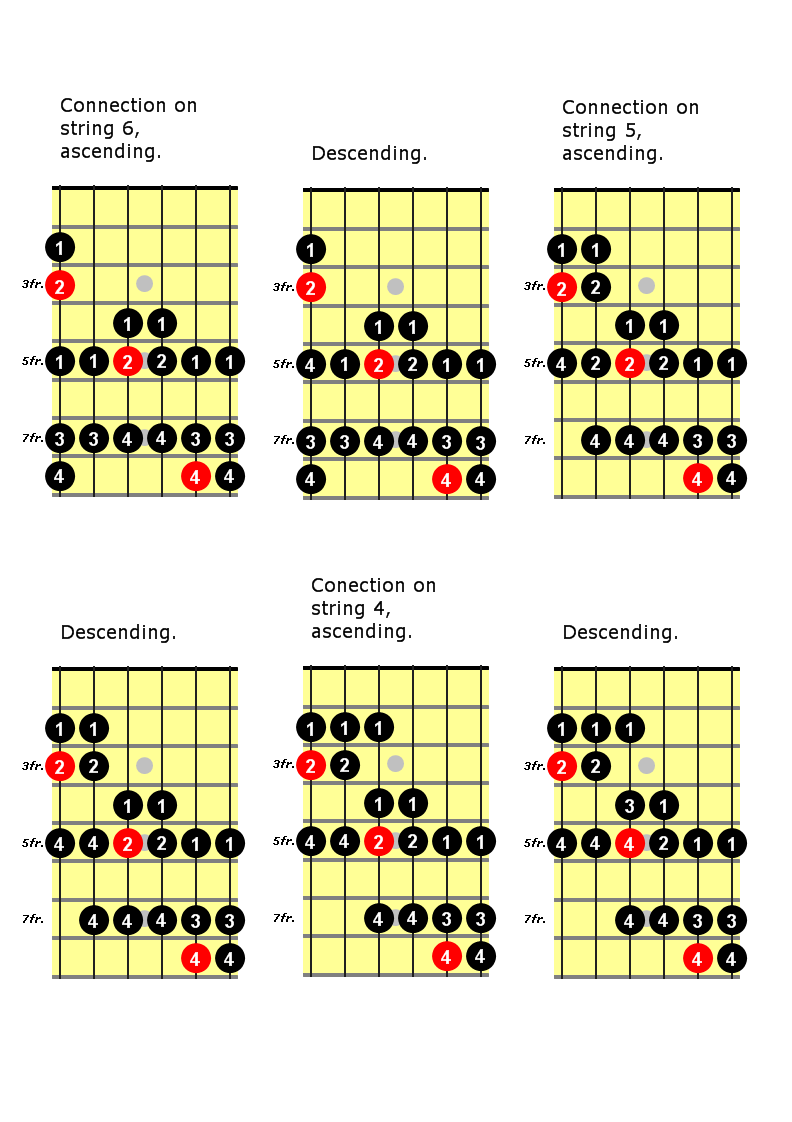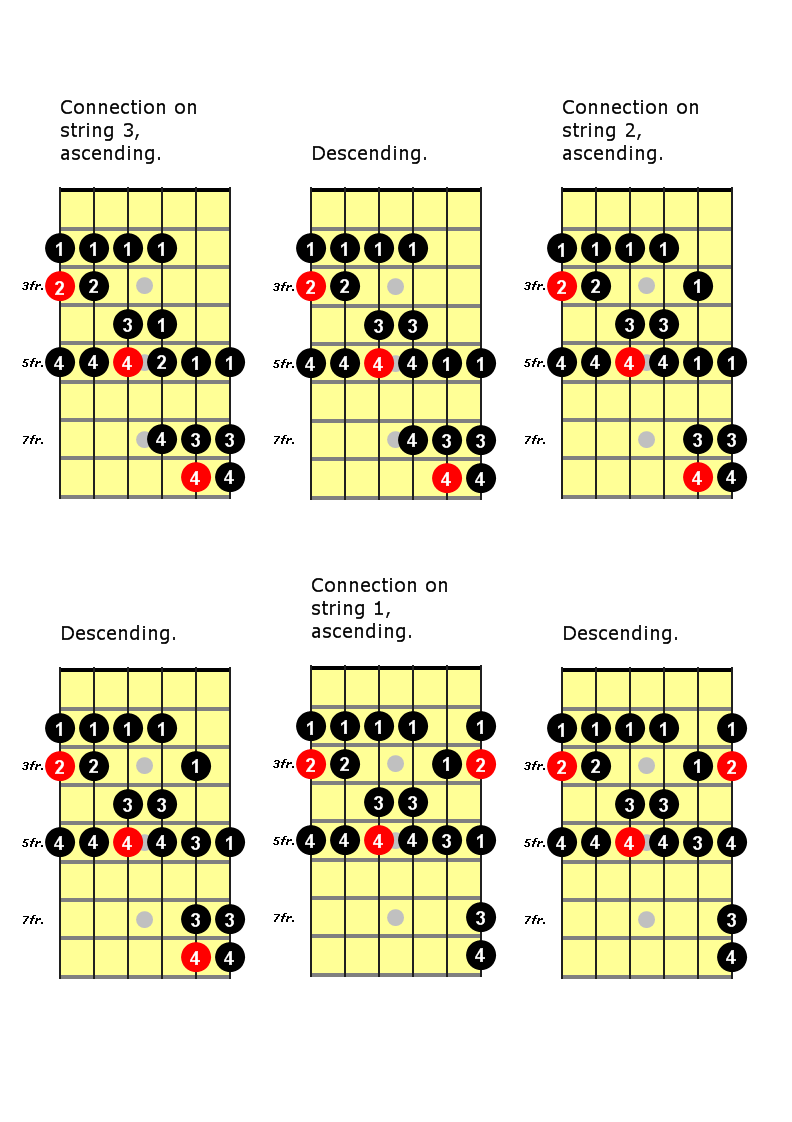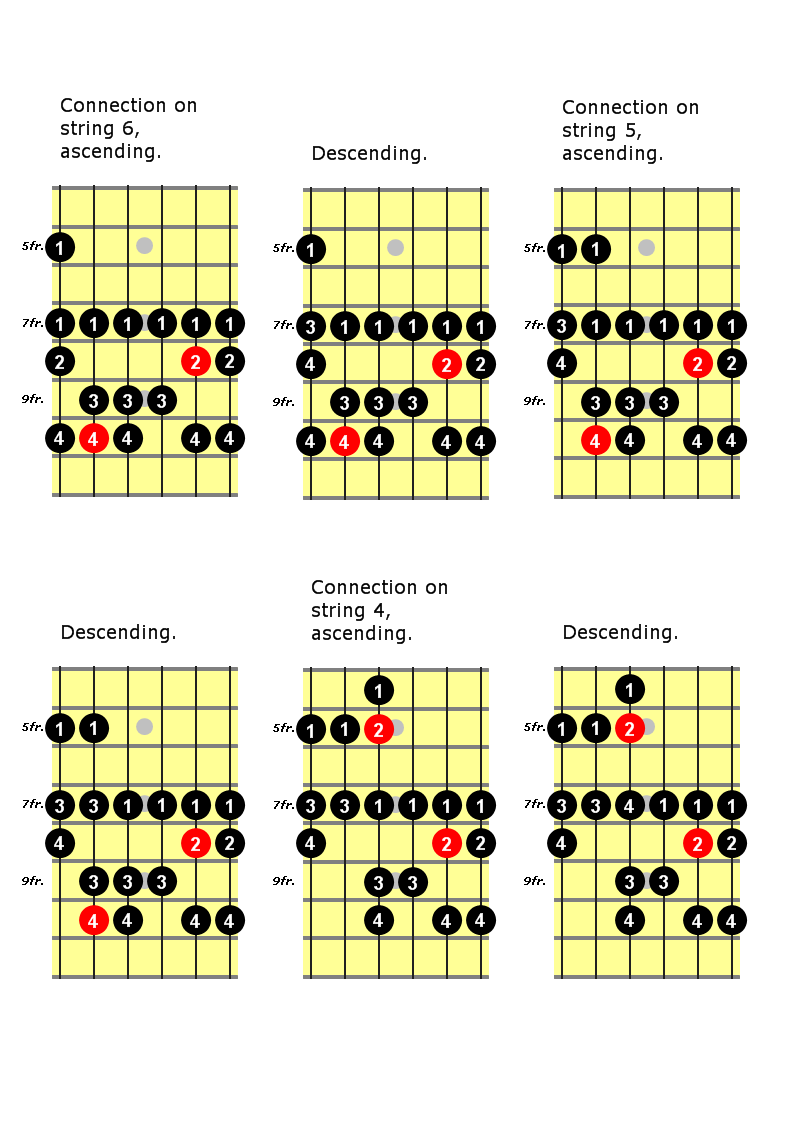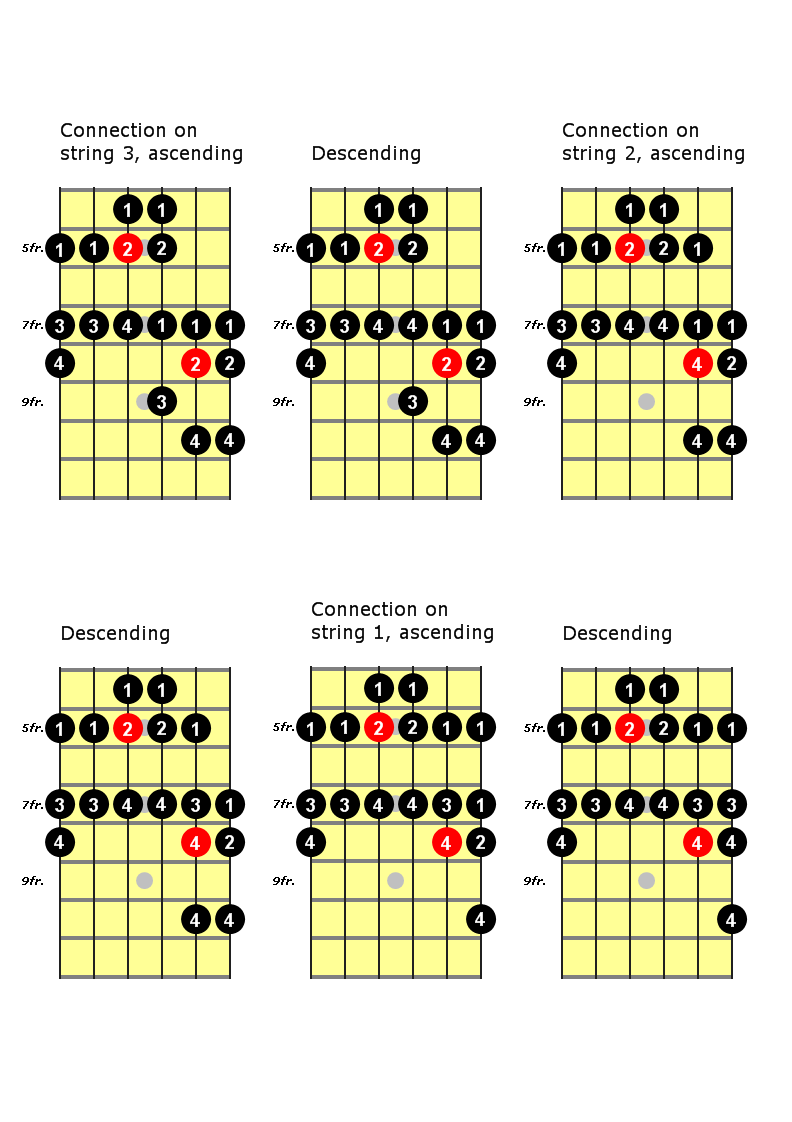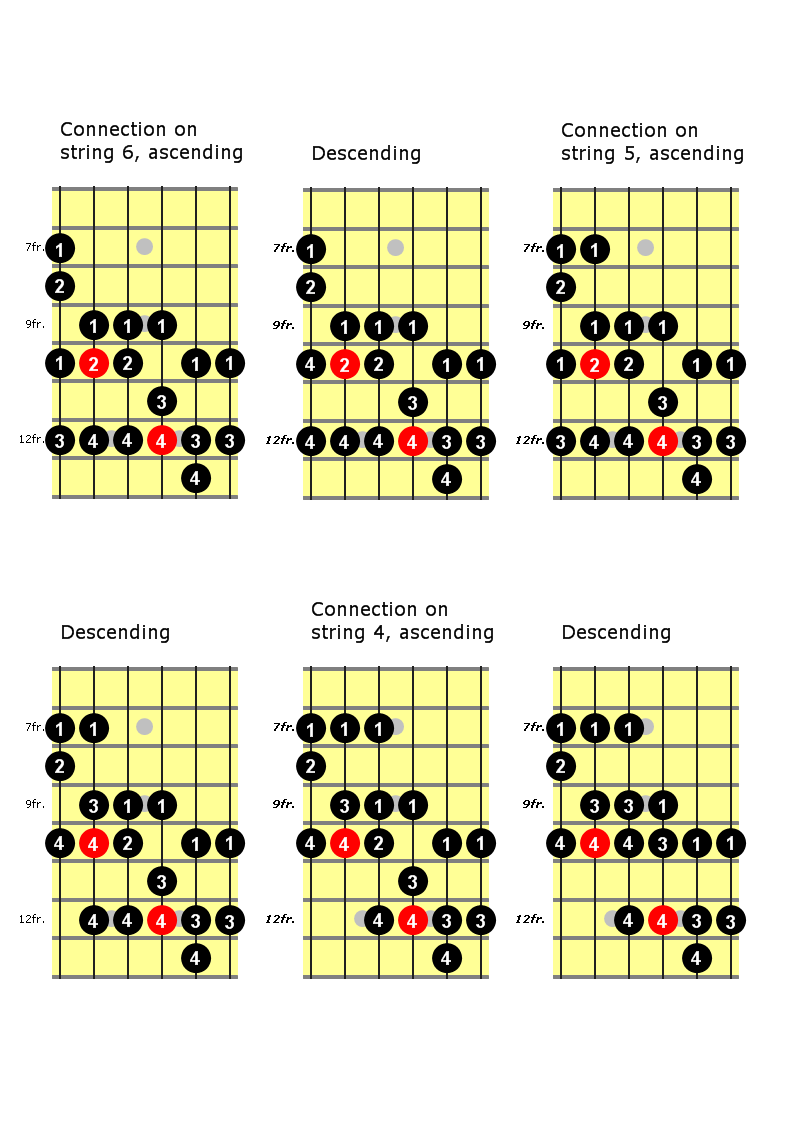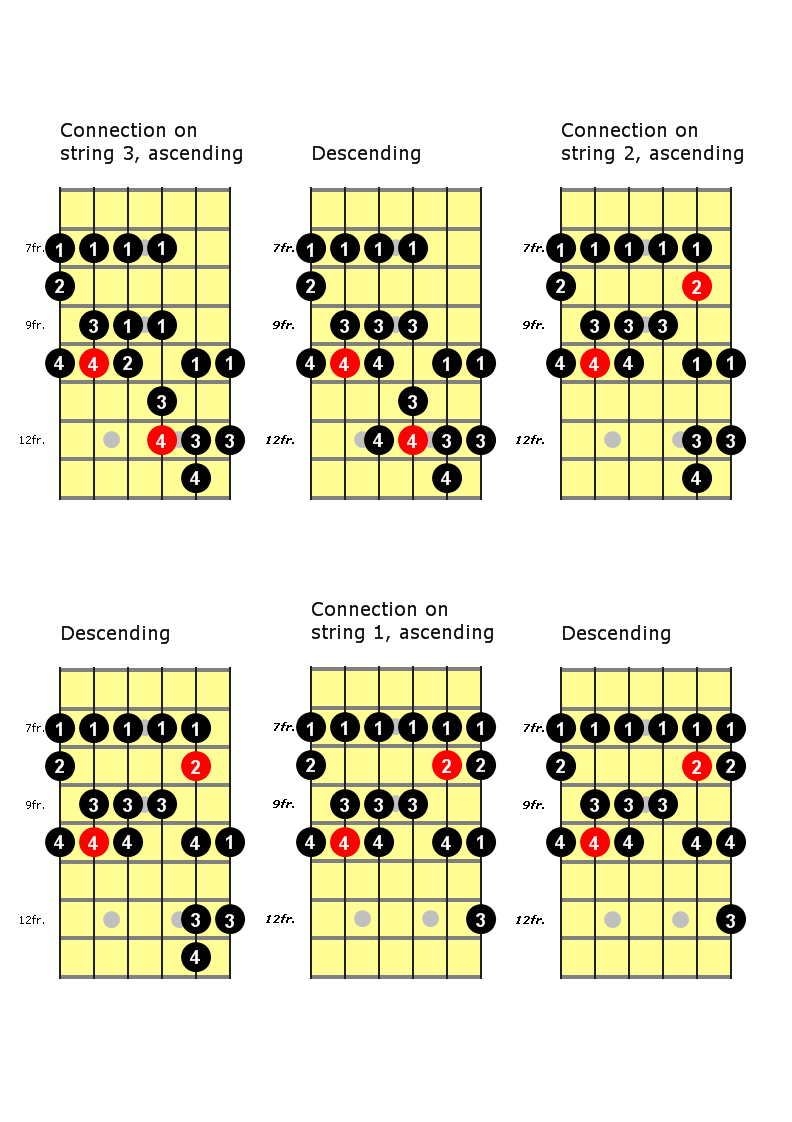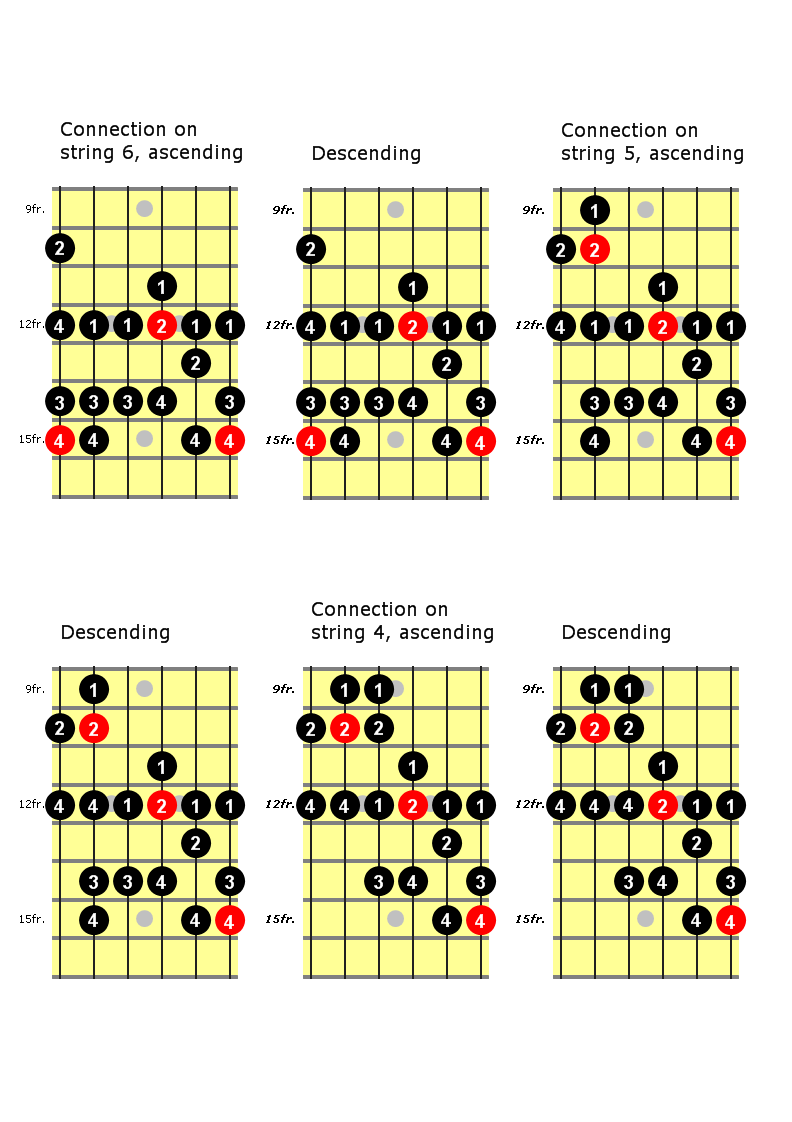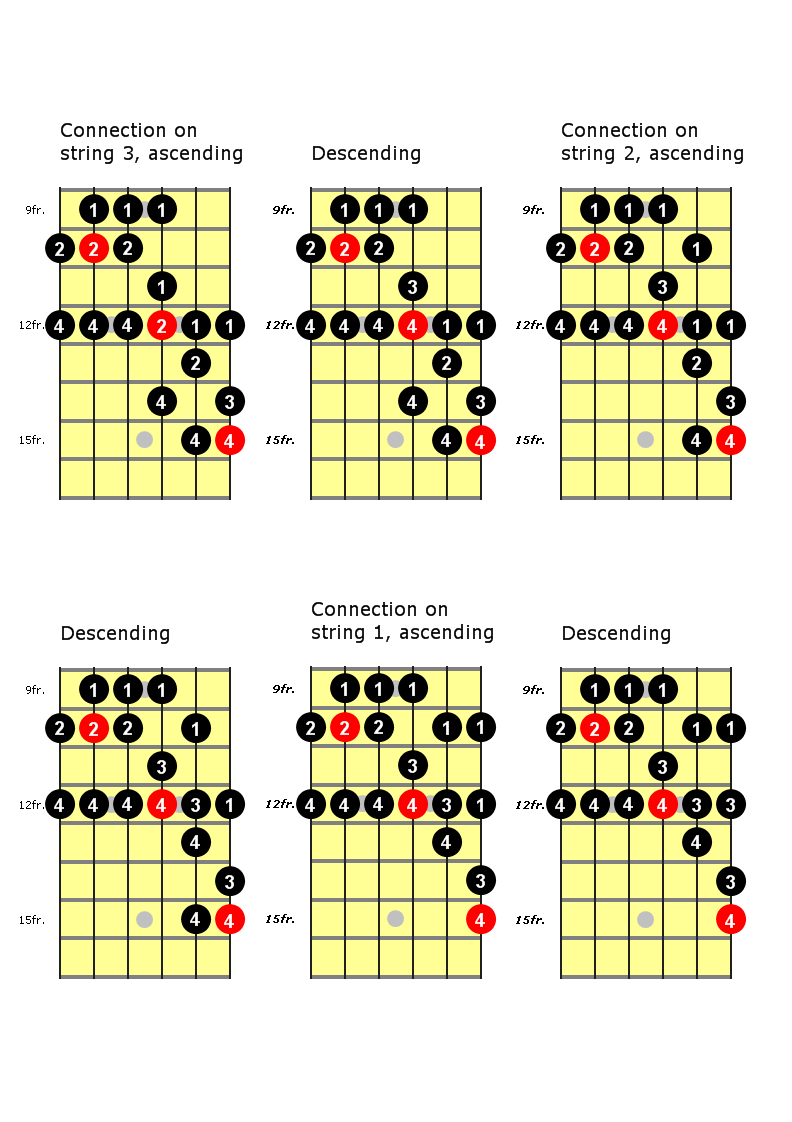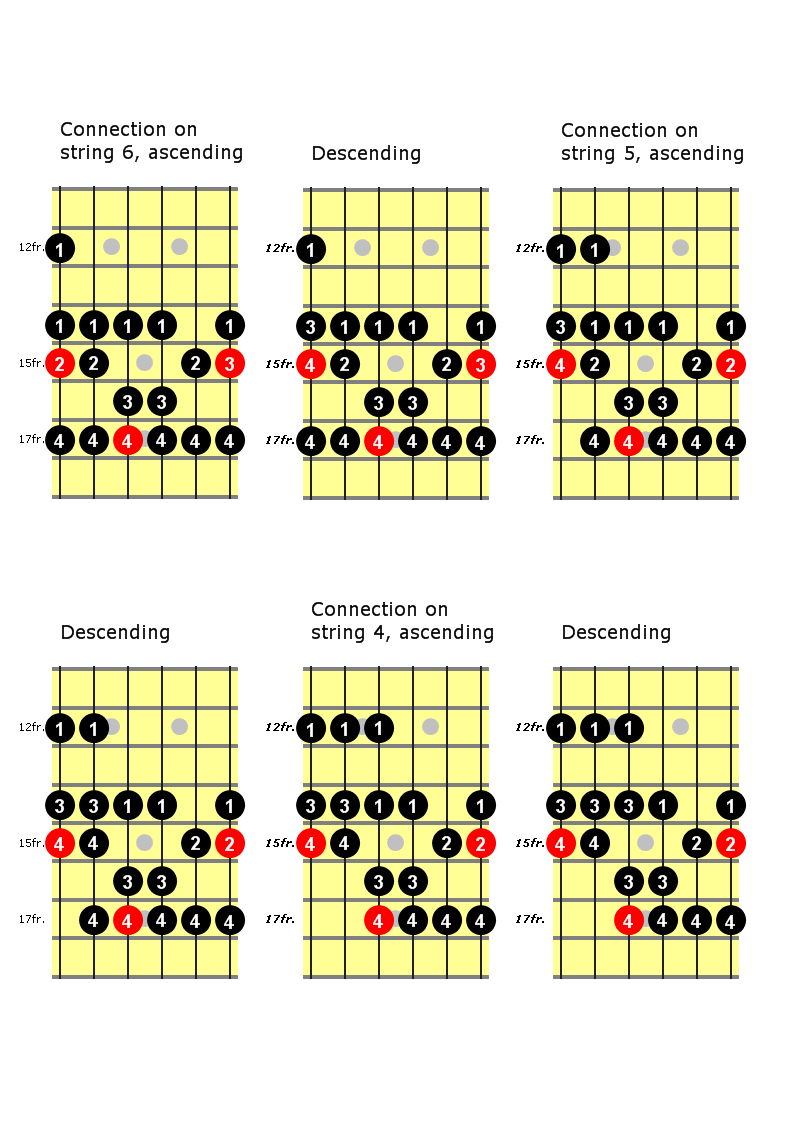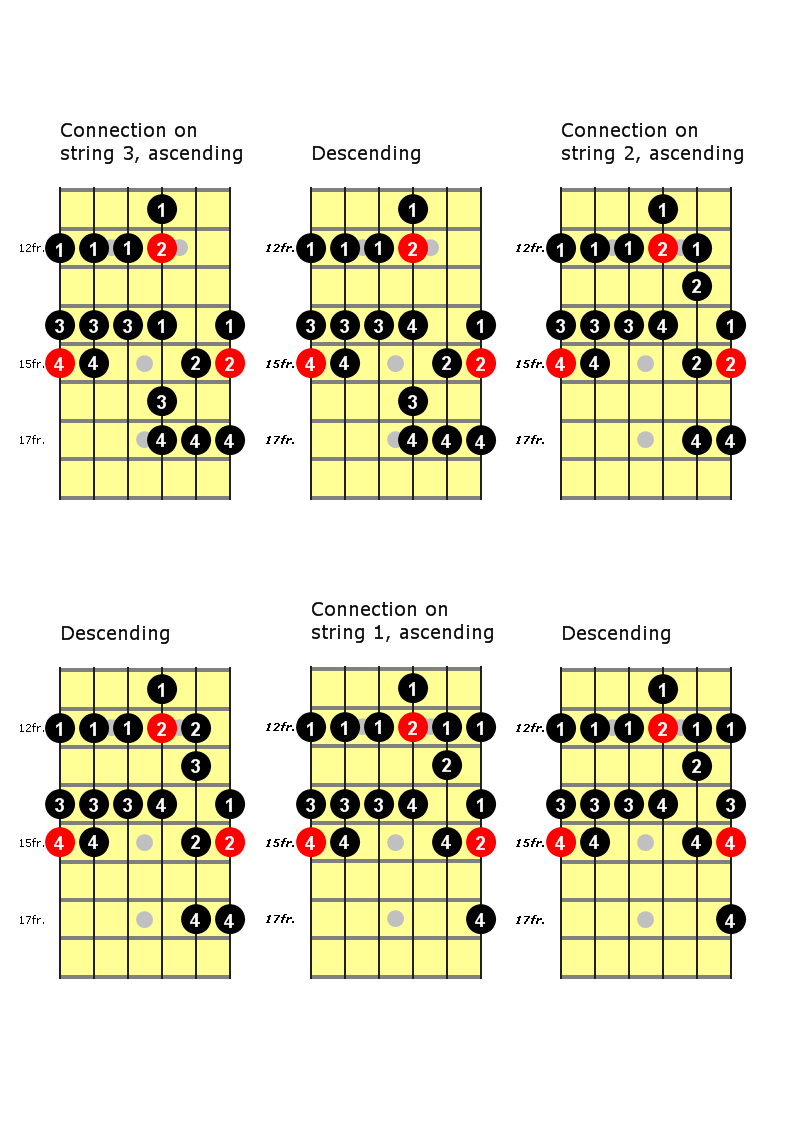In the last post we had talked about the importance of the major scale for the compression of the music as a whole, for being a key factor in the development of the Harmony and the minor scales (Harmonic Minor and Melodic Minor)
I also provided a system consisting of 5 patterns which contains all the patterns of the major scale and their respective modes (Greek modes). In that post I just concentrated on making a demonstration of how to study these patterns in the instrument, in order to memorize, in specific, the Ionic Mode or Major Scale.
All this through the use of the metronome in the execution of each pattern, with the fingering described in the graph, in various note figures or rhythmic figures (eighth notes, eighth note triplets and sixteenth notes, specifically), in order to develop technique and pro efficiency in the instrument.
Today, I bring you a new contribution:
The core of knowledge to be developed and understood remains the same, the Major Scale throughout the instrument, I will provide tools to put into practice and develop, in order to have a deep knowledge and free of limitations. In the medium and long term, with constant practice, they will allow us to develop our musicality, our technique, and consequently our creativity.
For a better understanding, I recommend you visit my first post referring to this topic:
Soon I will make an English edition of it
Let's start
My intention is to provide you with the tools to internalize the material correctly, then I will start with the tutorial, it is a system through which you can connect the previously seen patterns of the Major Scale, to memorize them in position and displacing.
Connection of the patterns of the major scale:
When we are going to execute a scale or an arpeggio, we have two ways of doing it, in position or displacing, in the first case we just execute an arpeggio or a scale in a specific position in the guitar, for example, a scale or an arpeggio between fret 5 and fret 9, which does not require us to change the hand position.
In the second case, the arpeggio can be the same but we execute it in a different way, moving through the fretboard, for example, going from fret 5 to fret 13.
A graphic example:
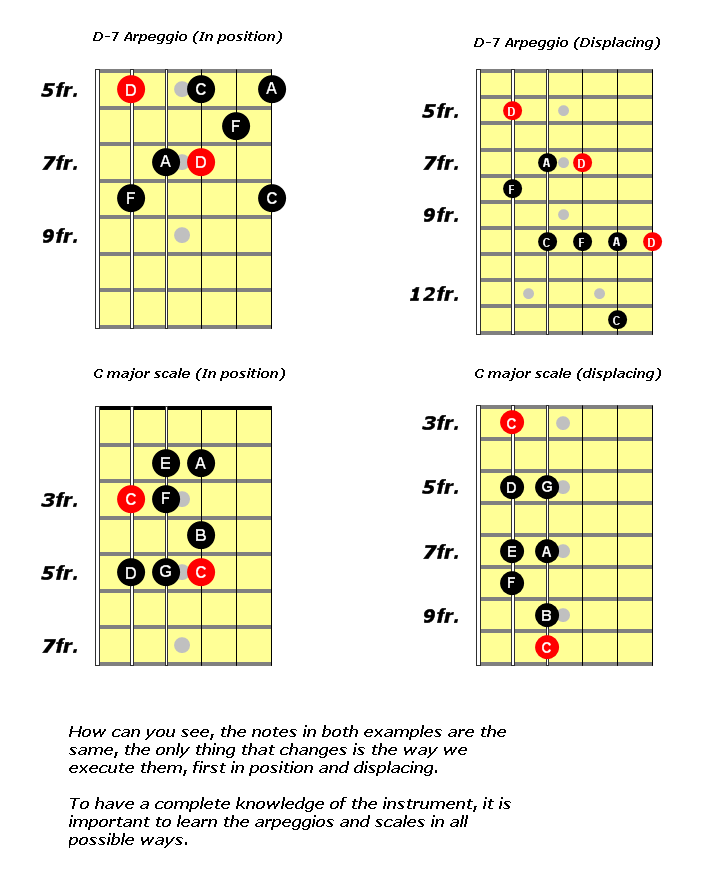
Each section consists of 3 graphics.
Figure 1 contains the diagram of the two patterns connected in the fretboard with their respective notes and two small diagrams with the intervals contained within each of the patterns.
Graphs 2 and 3 contain the fingerings of each connection, ascending and descending from the sixth string to the first string.
Tools and suggestions to take advantage of the material.
Note: The letter "R" in red color in the diagram, means "Root", that is, tonic or root of the scale, which in this case is G Major.
From the tonic (R) each consecutive note forms an interval (A distance which is measured in tones and semitones), which are indicated in the two small diagrams of each image by its analysis, which is a number accompanied by a symbol or letter that tells us what distance constitutes the interval and if it is a major interval, minor, augmented, diminished, etc. I'll develop more about this in an upcoming post on Harmony and Musical Theory
If we build an scale on each of the intervals, which contains the same notes as the Major Scale in question, for example, ascending from 2Δ to its repetition one octave above, we will obtain a Greek Mode. In my next post about the Major Scale, I will go deeper into the Modes.
- R Tonic or root (Tonic of Ionian mode)
- 2∆ Major second (Tonic of Dorian mode)
- 3∆ Major third (Tonic of Frigian mode)
- p4 o 4 Perfect fourth (Tonic of Lidian mode)
- p5 o 5 Perfect fifth (Tonic of the Mixolidian mode)
- 6∆ Major sixth (Tonic of the Eolian mode and the Natural Minor Scale)
- 7∆ Major seven (Tonic of the Locrian mode)
Connection of patterns 1 and 2
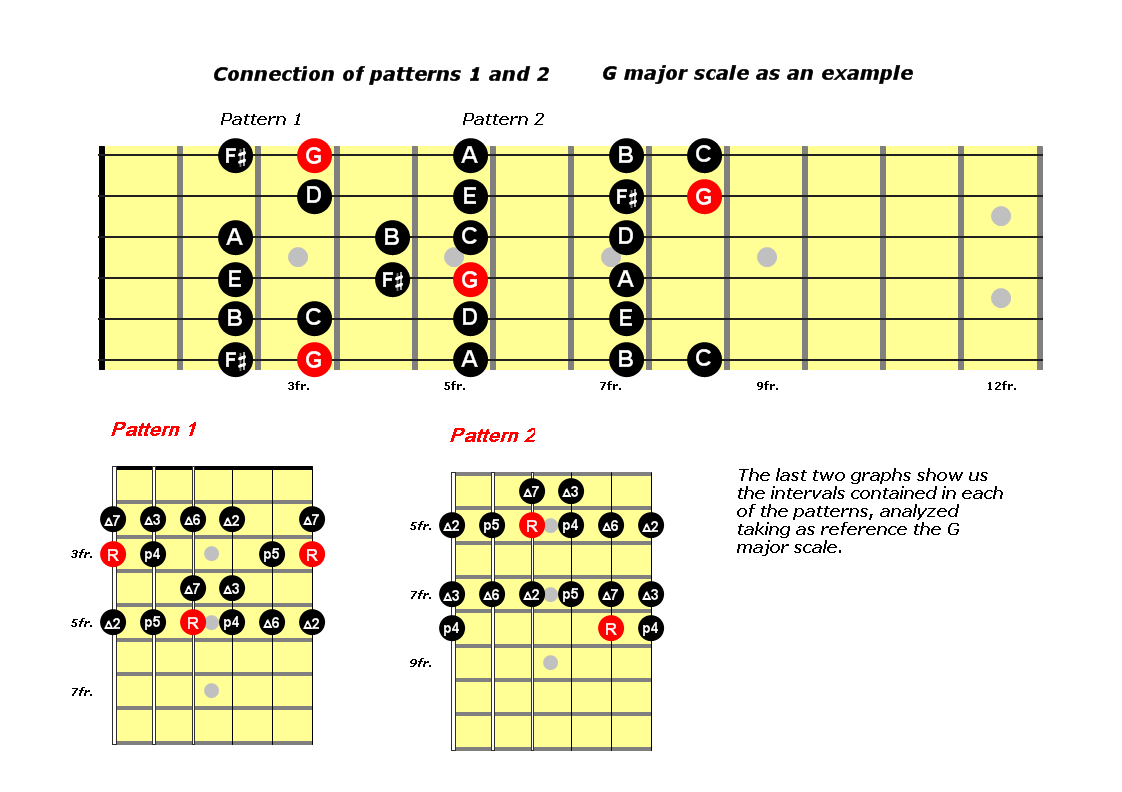

Connection of patterns 2 and 3
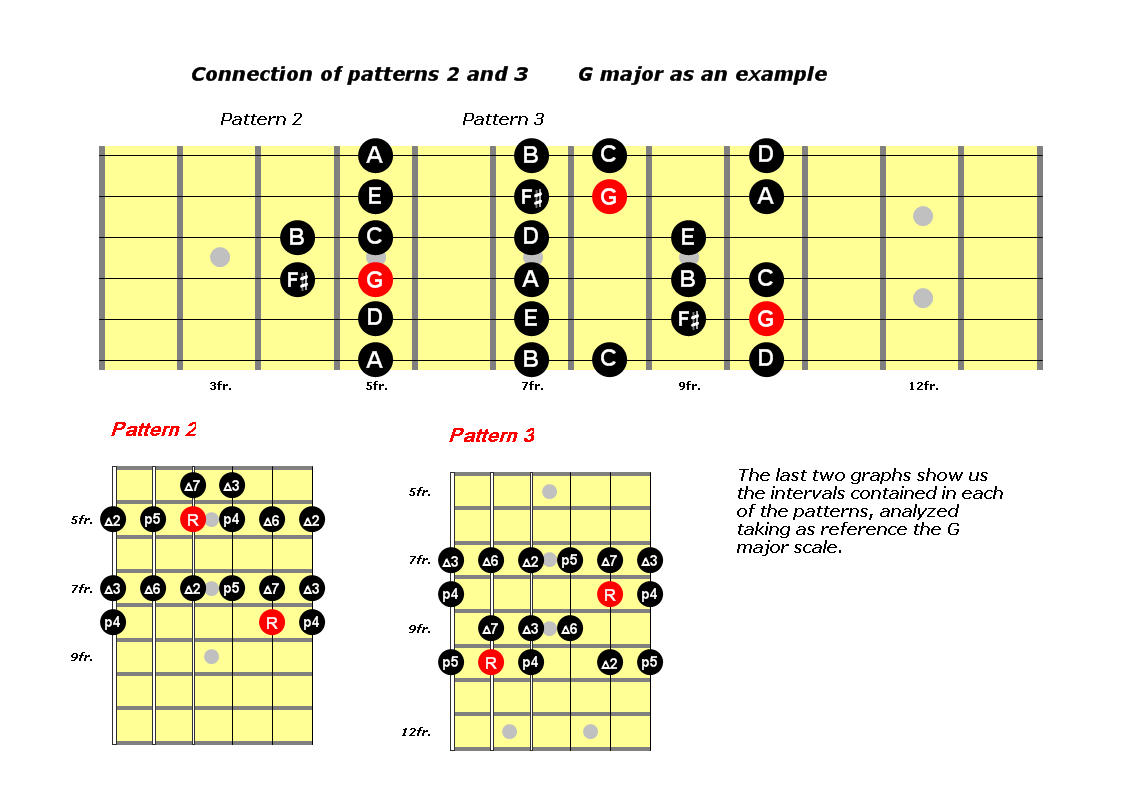

Connection of patterns 3 and 4
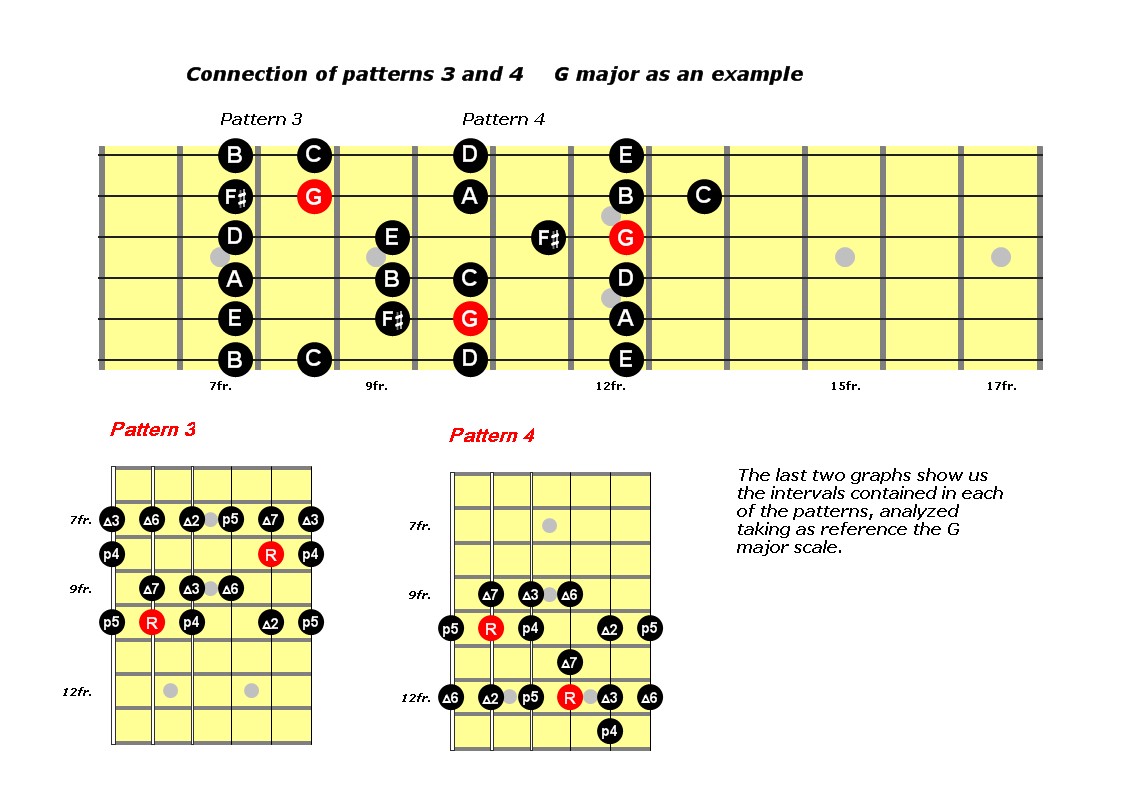

Connection of patterns 4 and 5
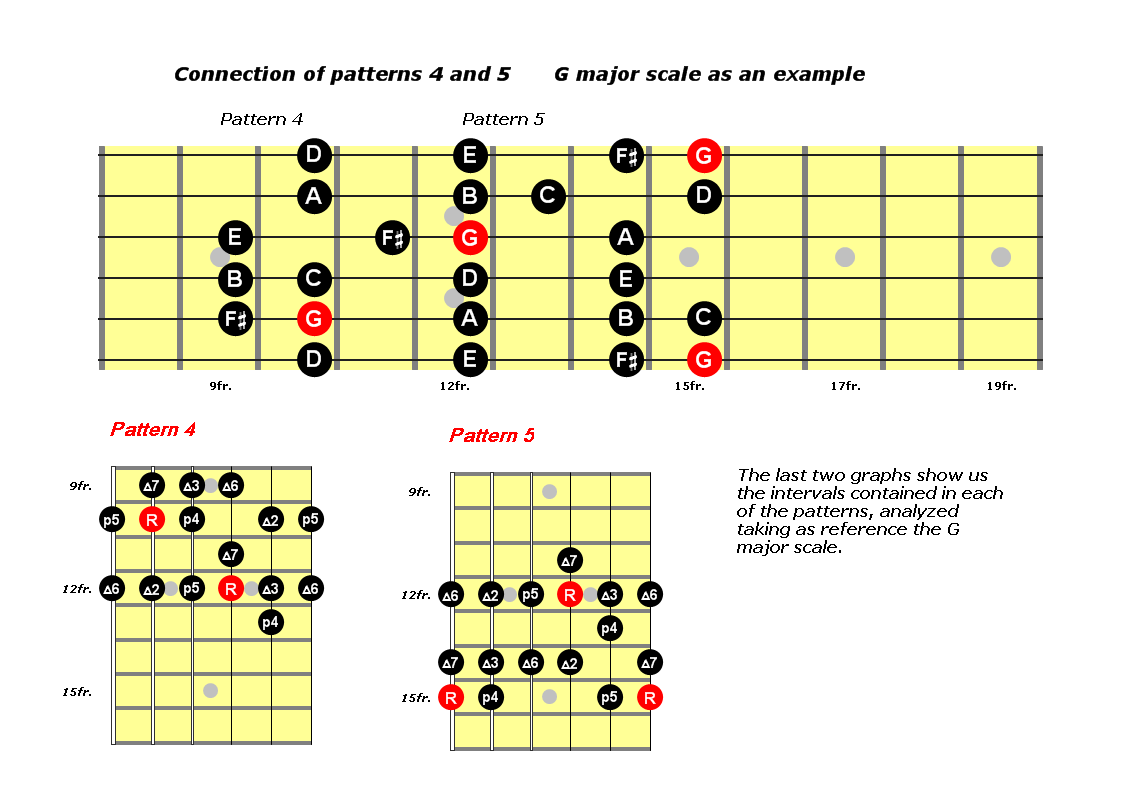

Connection of patterns 5 and 1
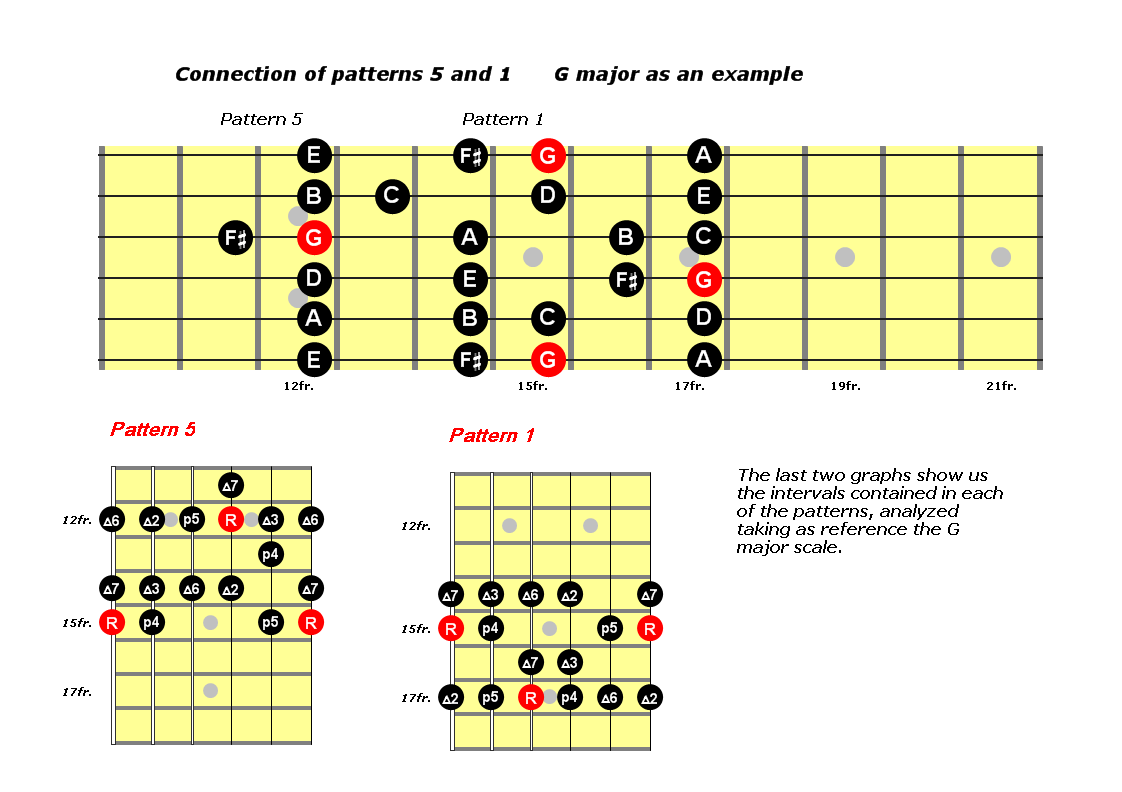

Recomendations
1 -These patterns can be transported to any area of the guitar fretboard, in order to locate us in the tonalities or modes that we want.
2 - Before playing them, try to visualize them in the fingerboard, close your eyes and imagine which region you are going to play, fingering, etc. Afterwards, open your eyes and see where you want to touch it. Now that you have it mentally, touch them at a slow speed, preventing any type of error, in this way you will memorize the correct technique and fingering.
3 - Play them safely, despite being a technical exercise is recommended to play them with the same grace with which we would play a song that we like, that each note sounds good.
4 - Do not forget to improvise! Experiment with the various combinations of sounds offered by the major scale, play with them and compose melodies that you like, always give a creative touch to everything you practice.

Note
The Spanish version of this post it will content Video. Soon i'll make english subtitles for my instructional videos to being able of use it in the Music english educational post.
All the material is original, created by me based on the method that my teacher taught me Gonzalo Micô


Design: @Cre47iv3

